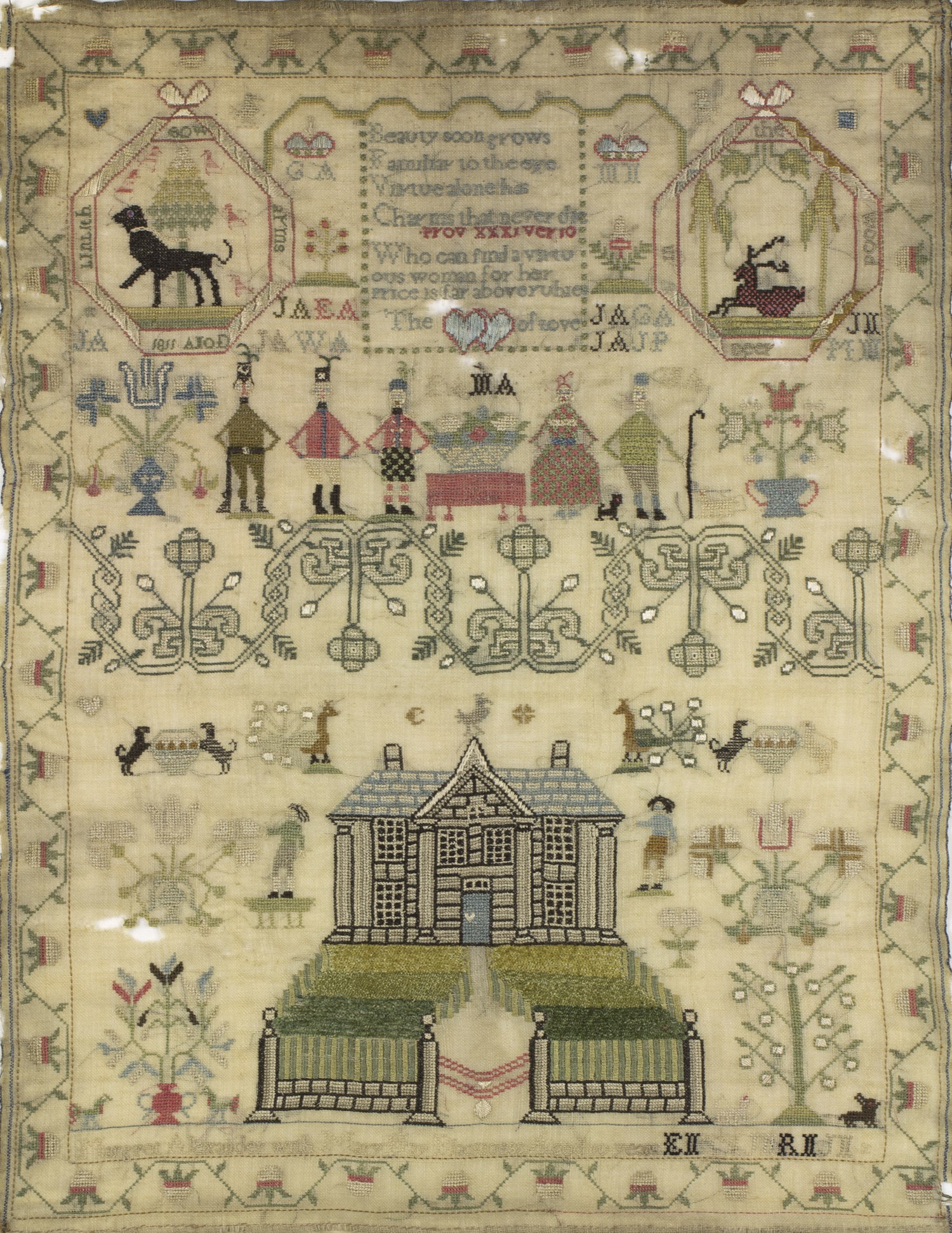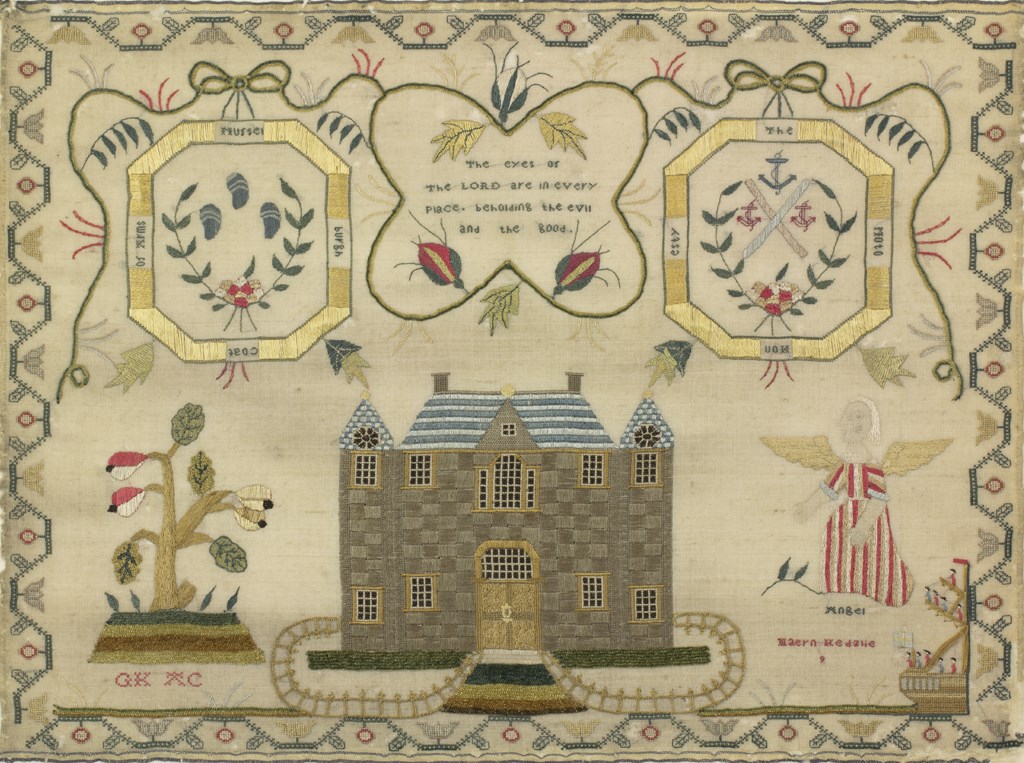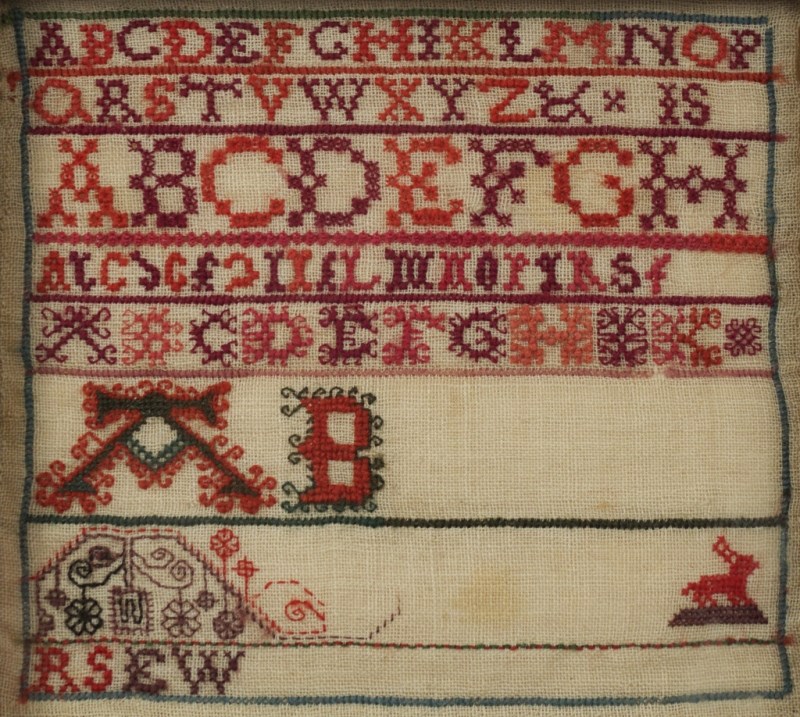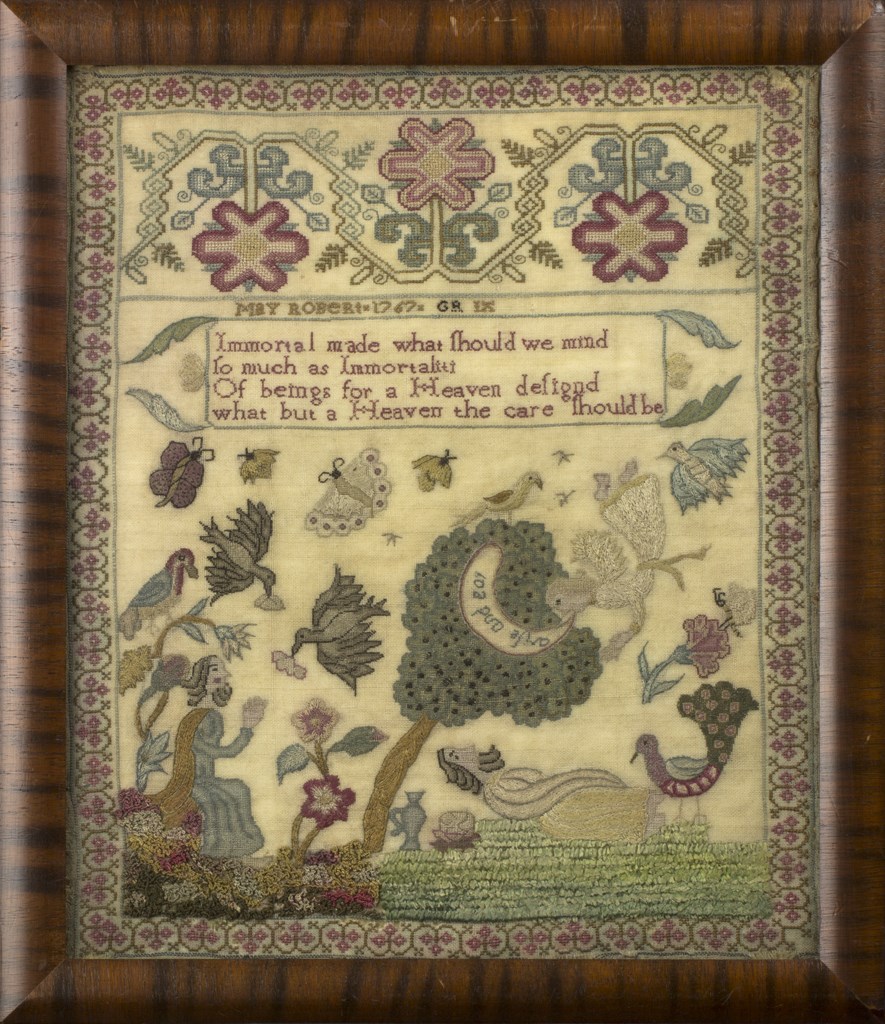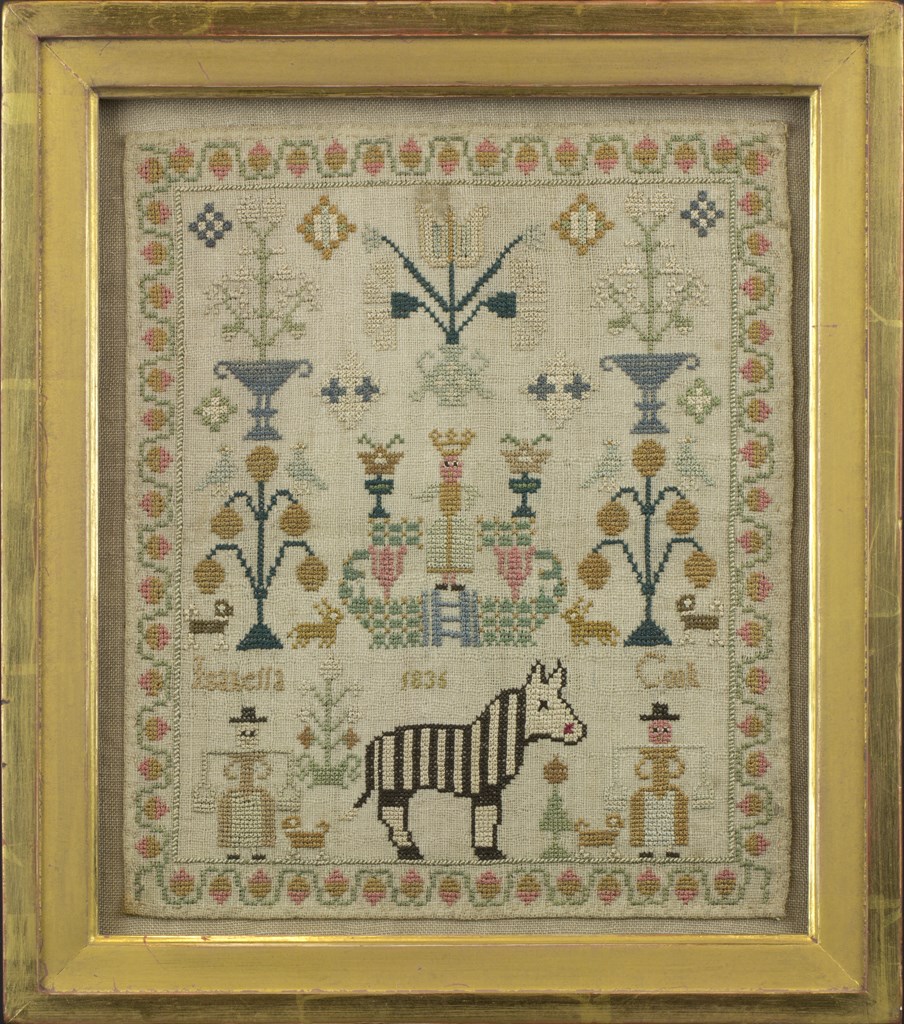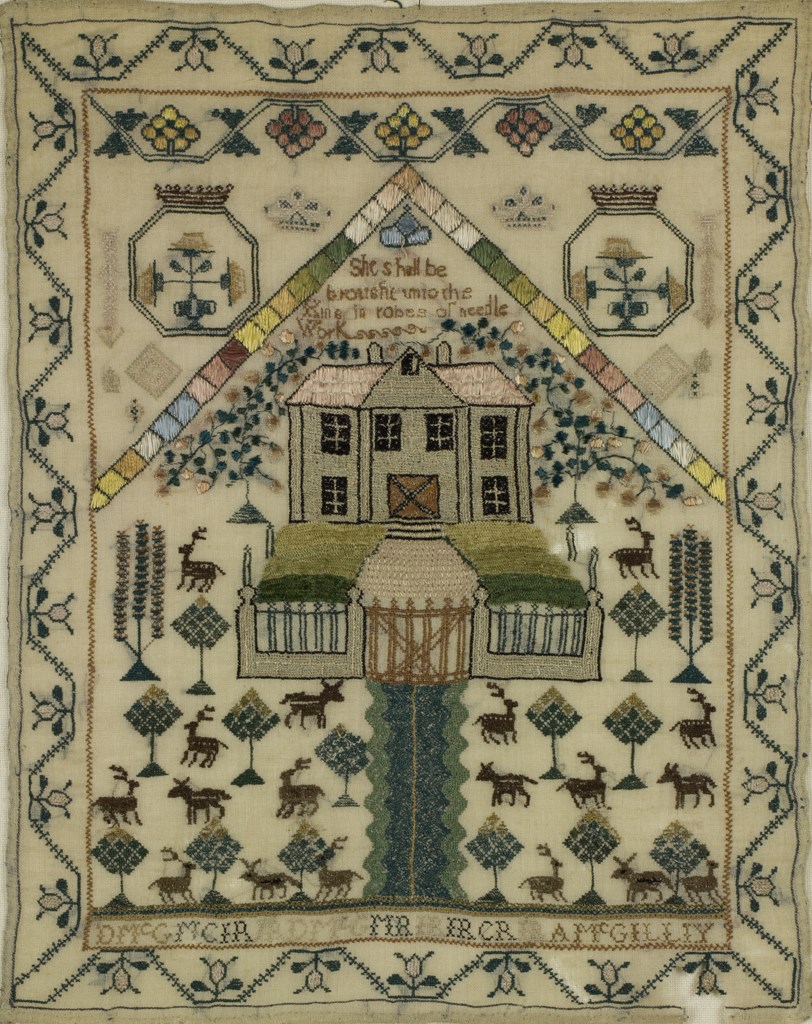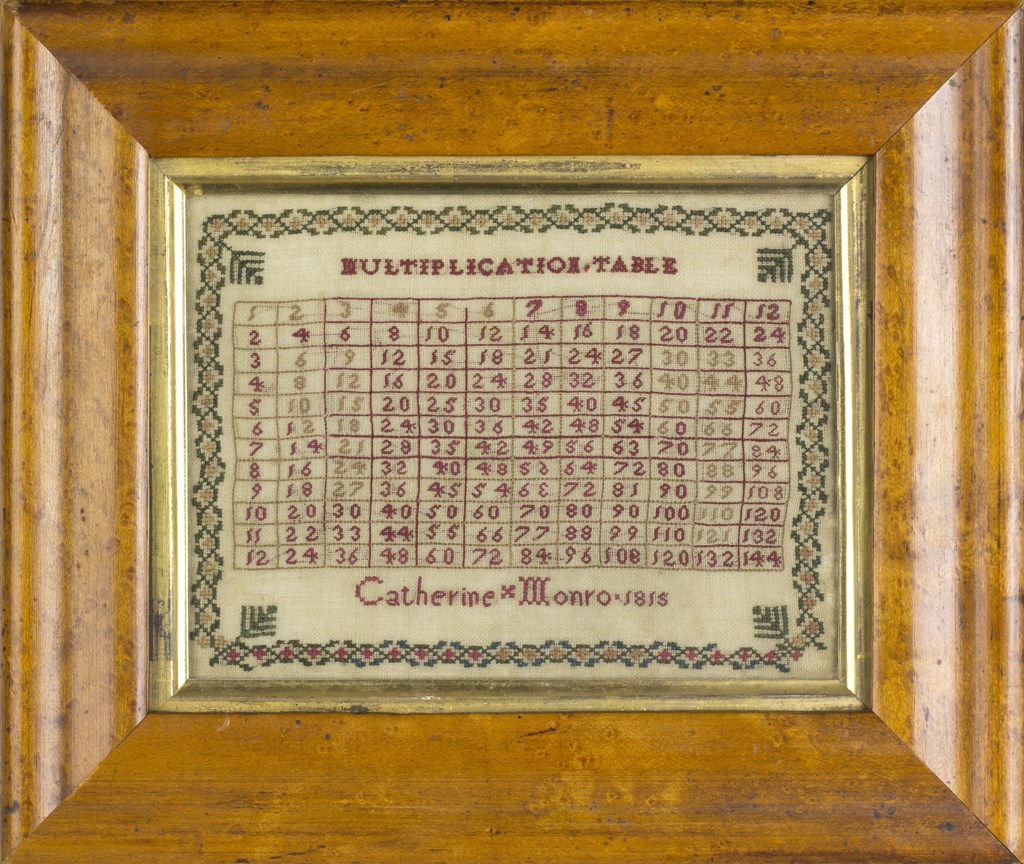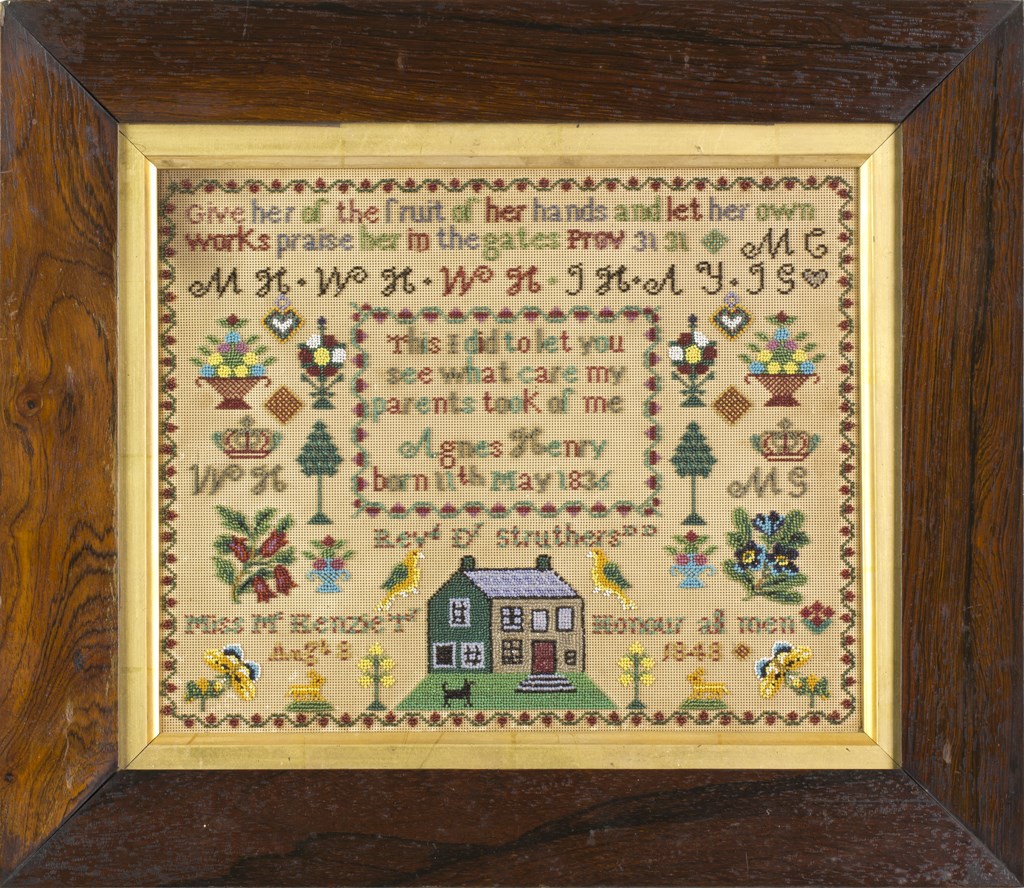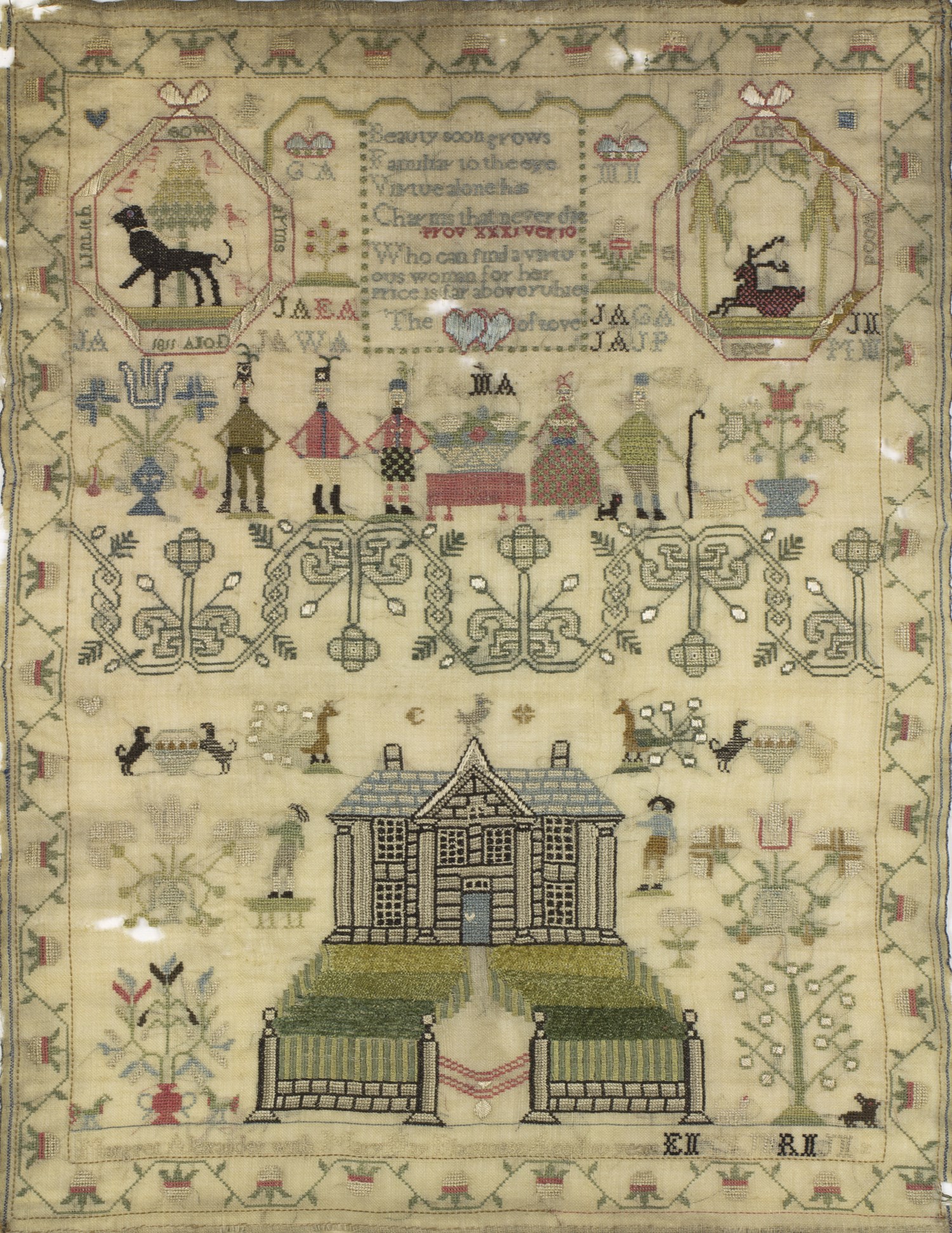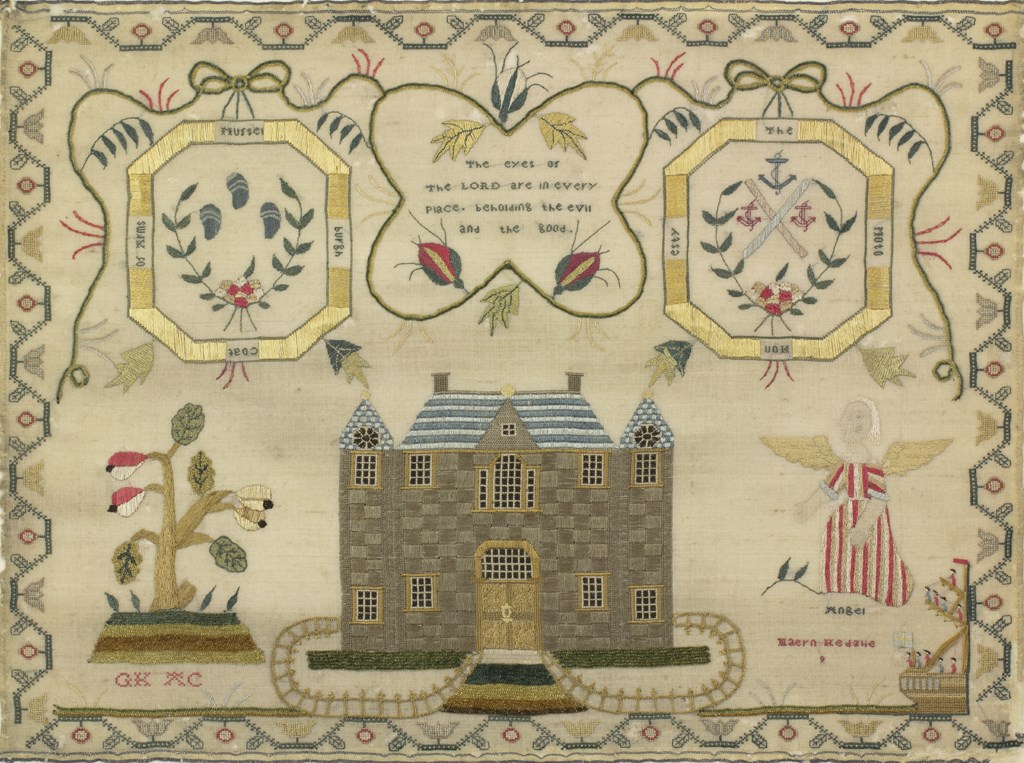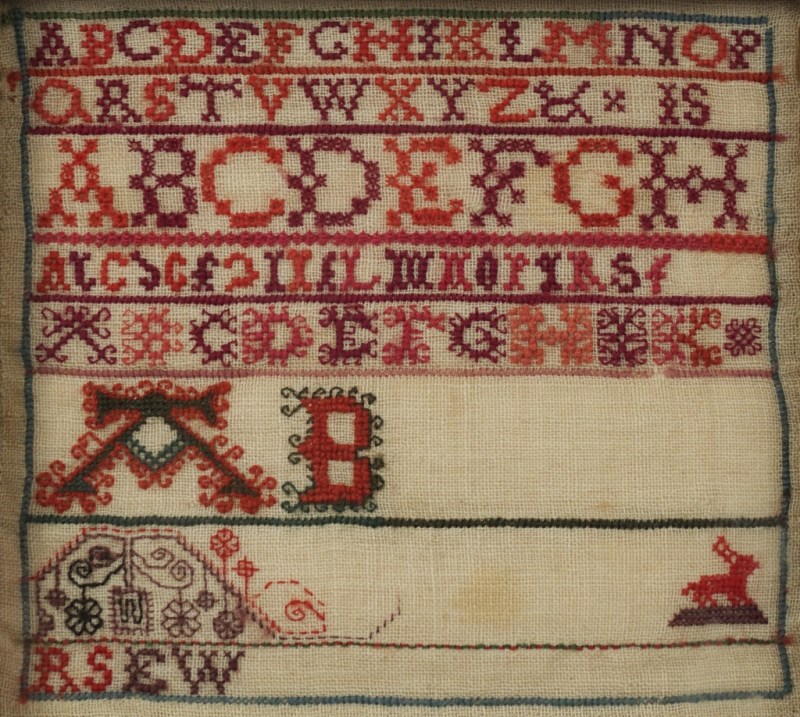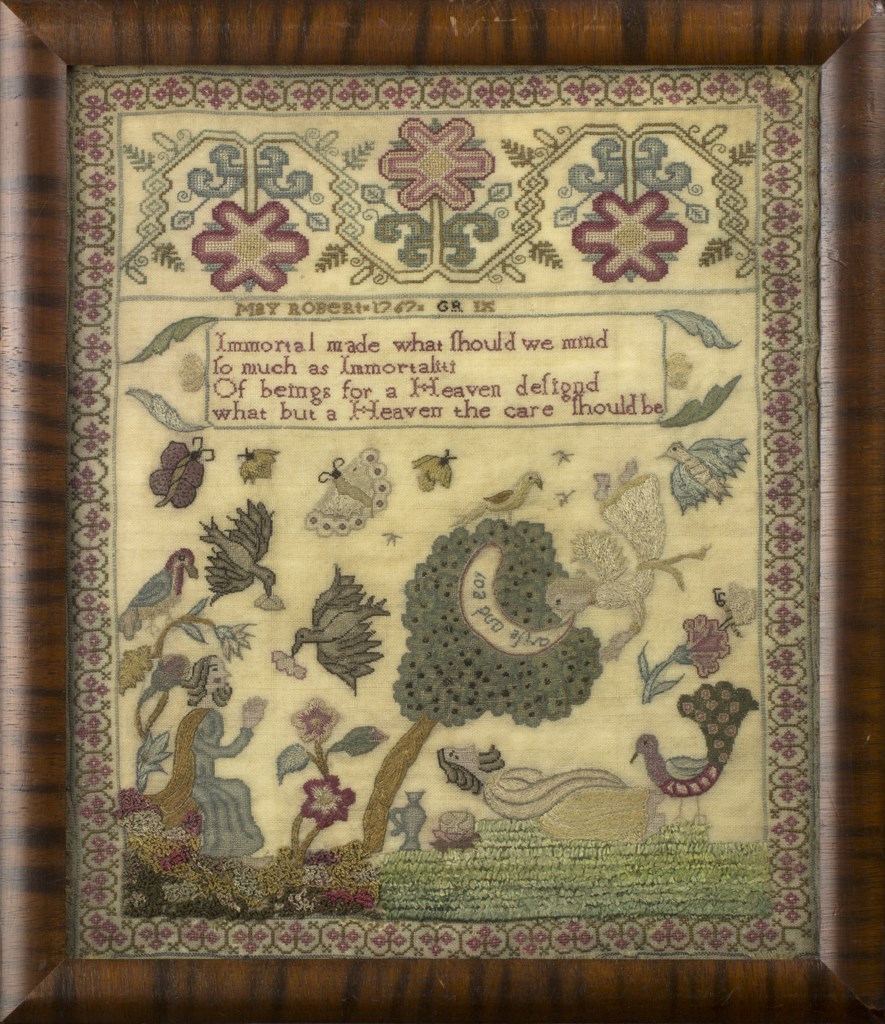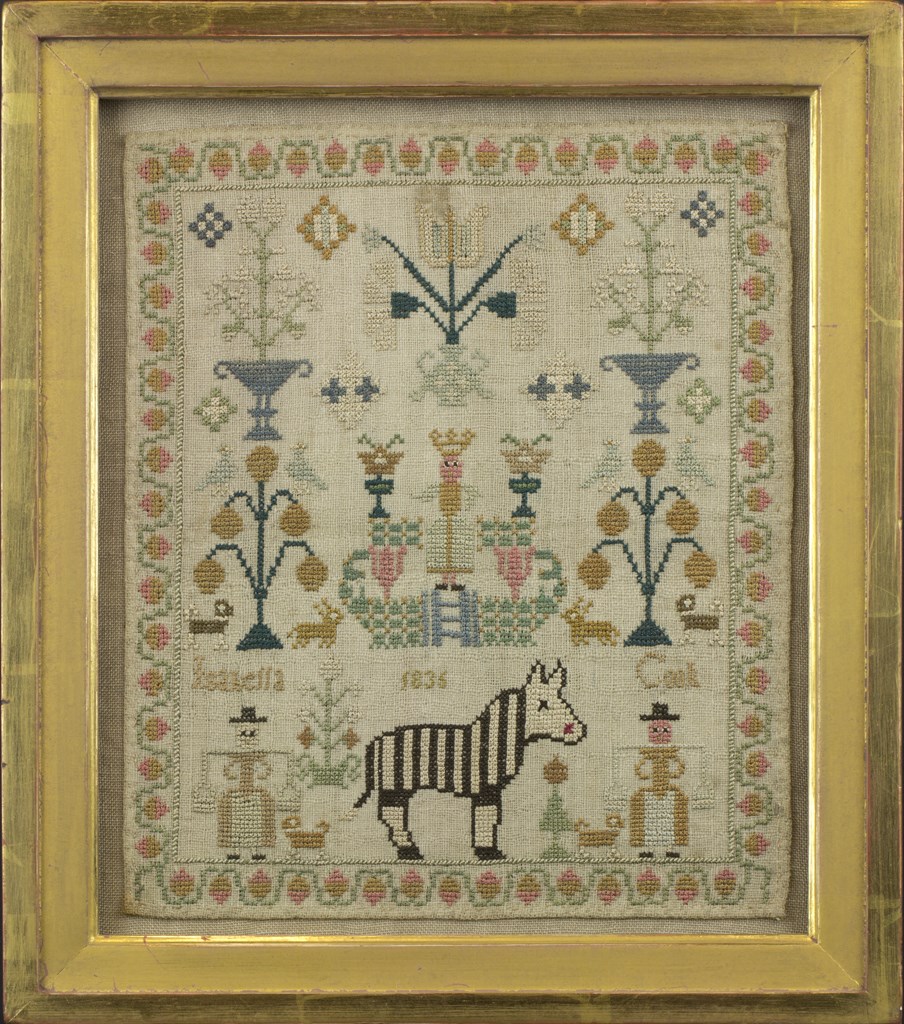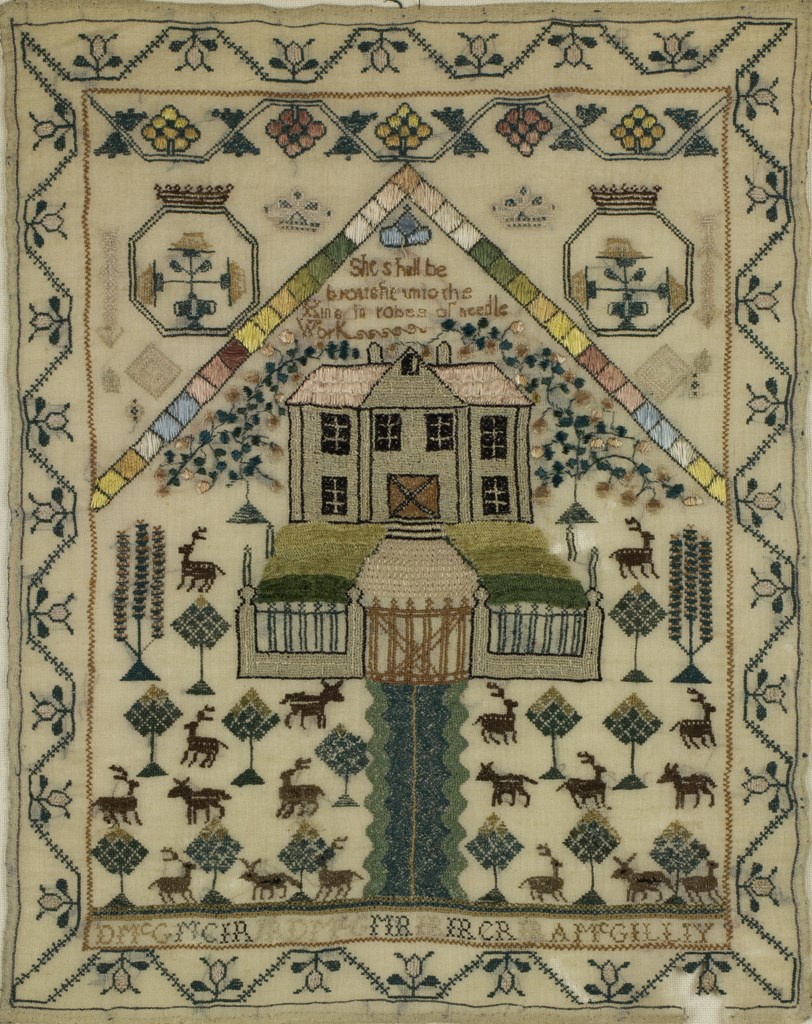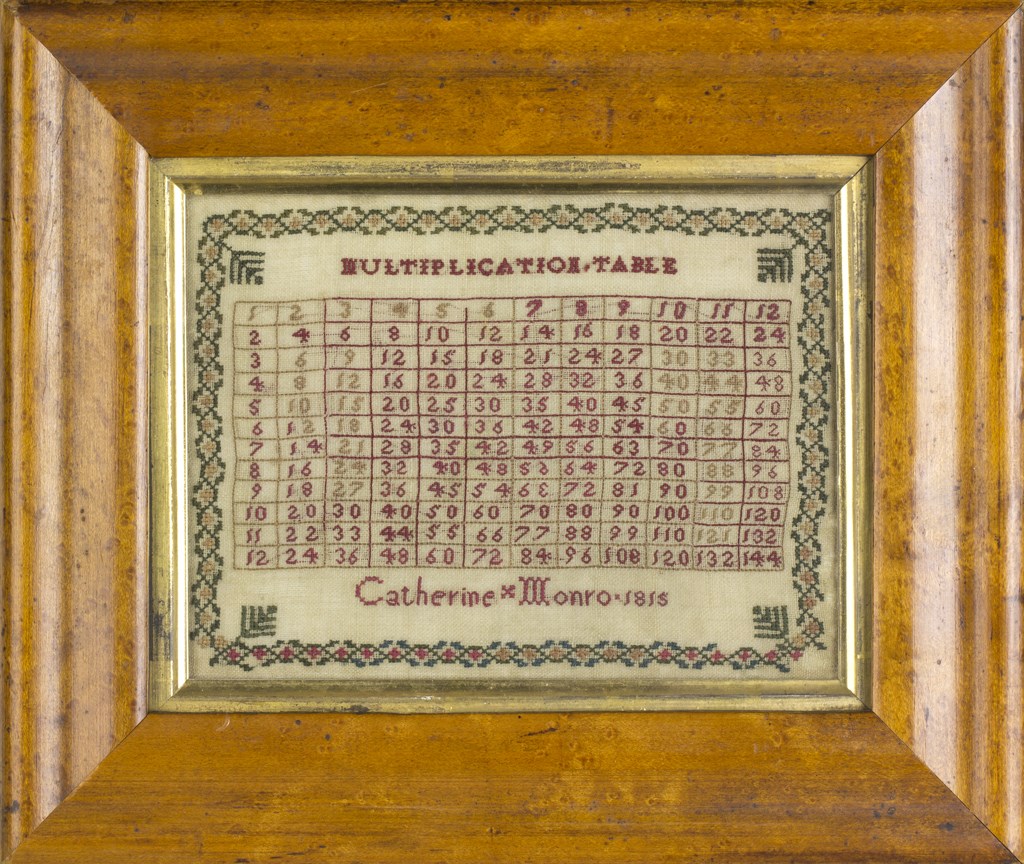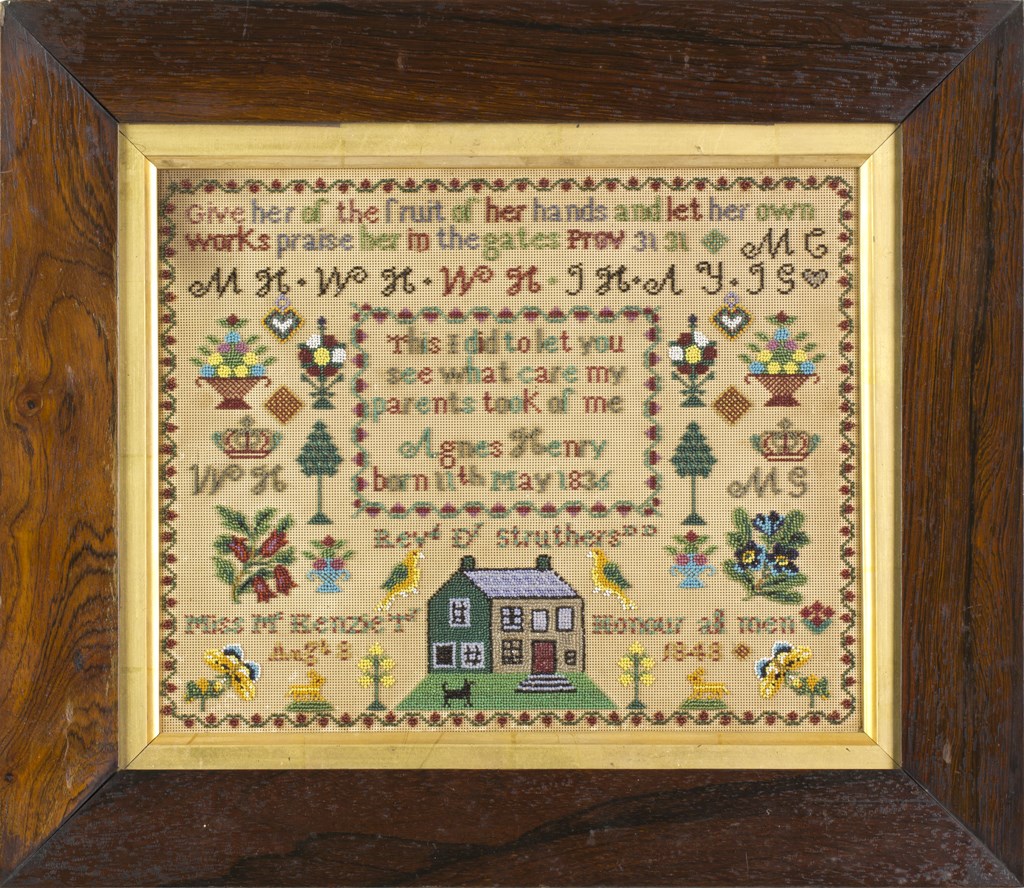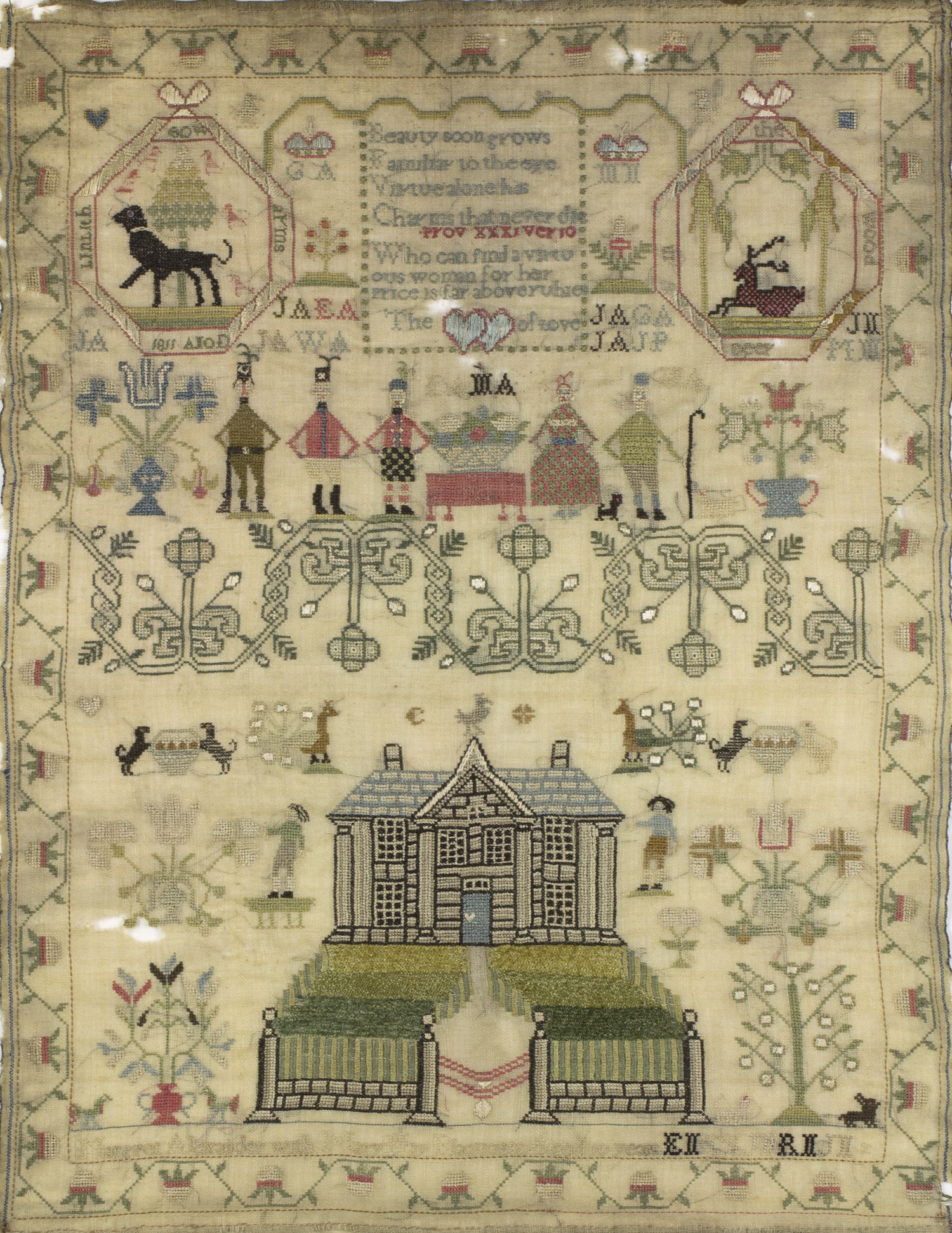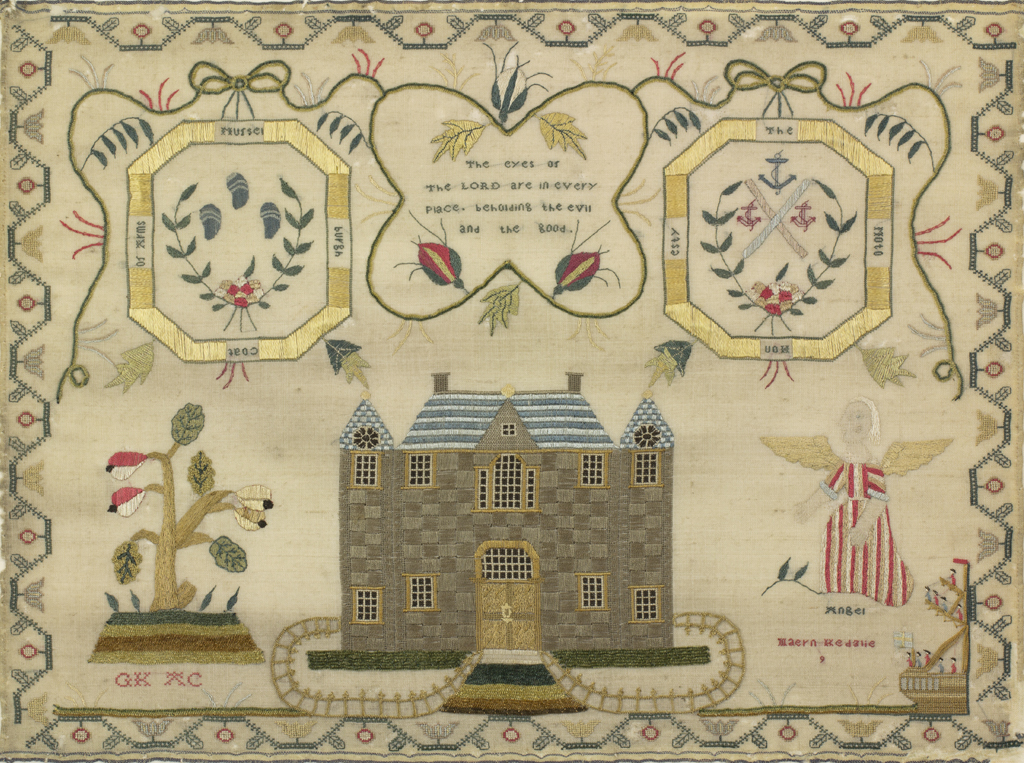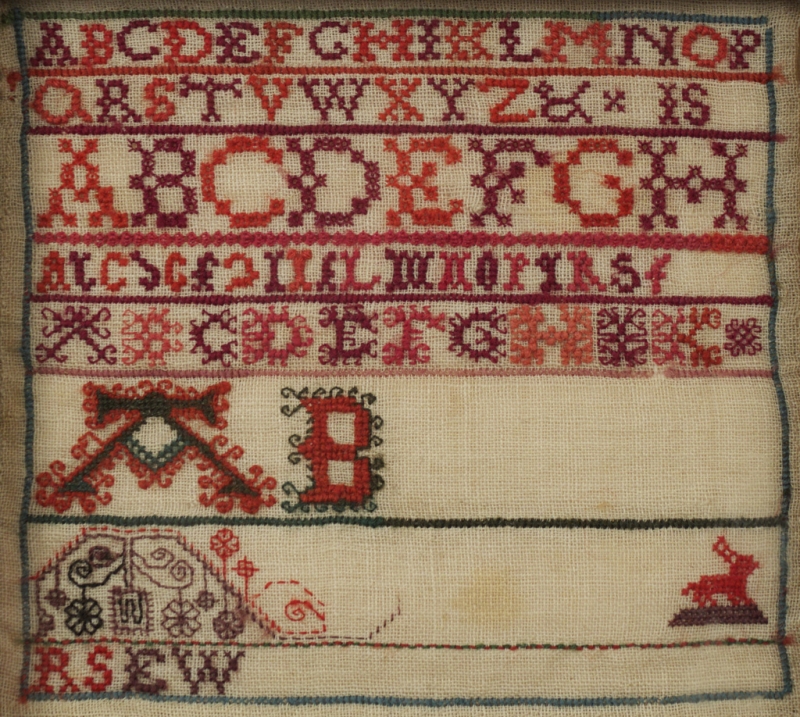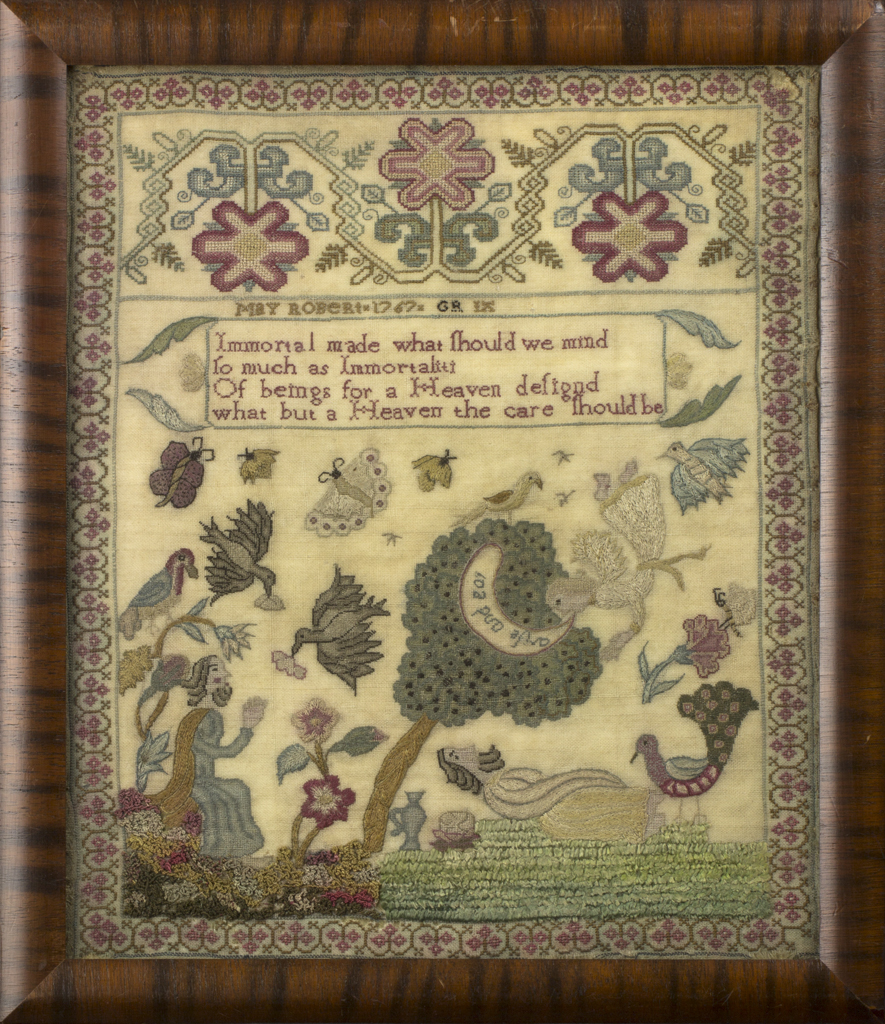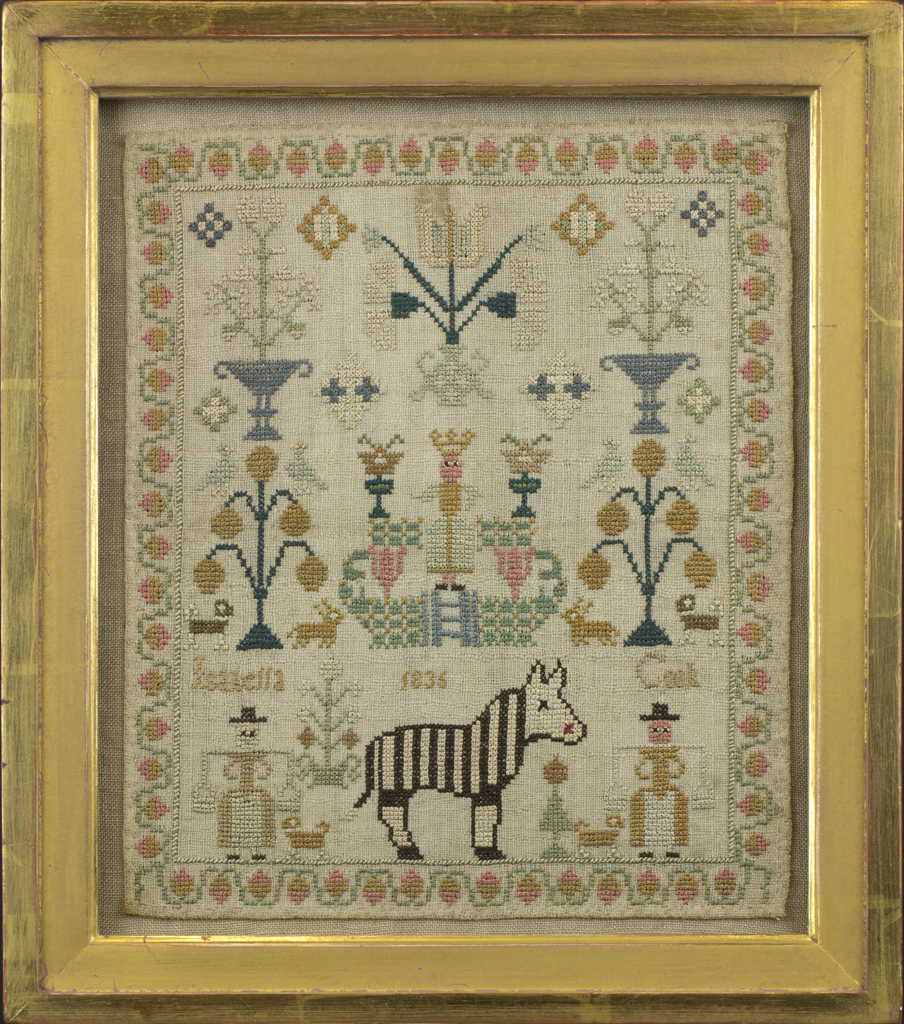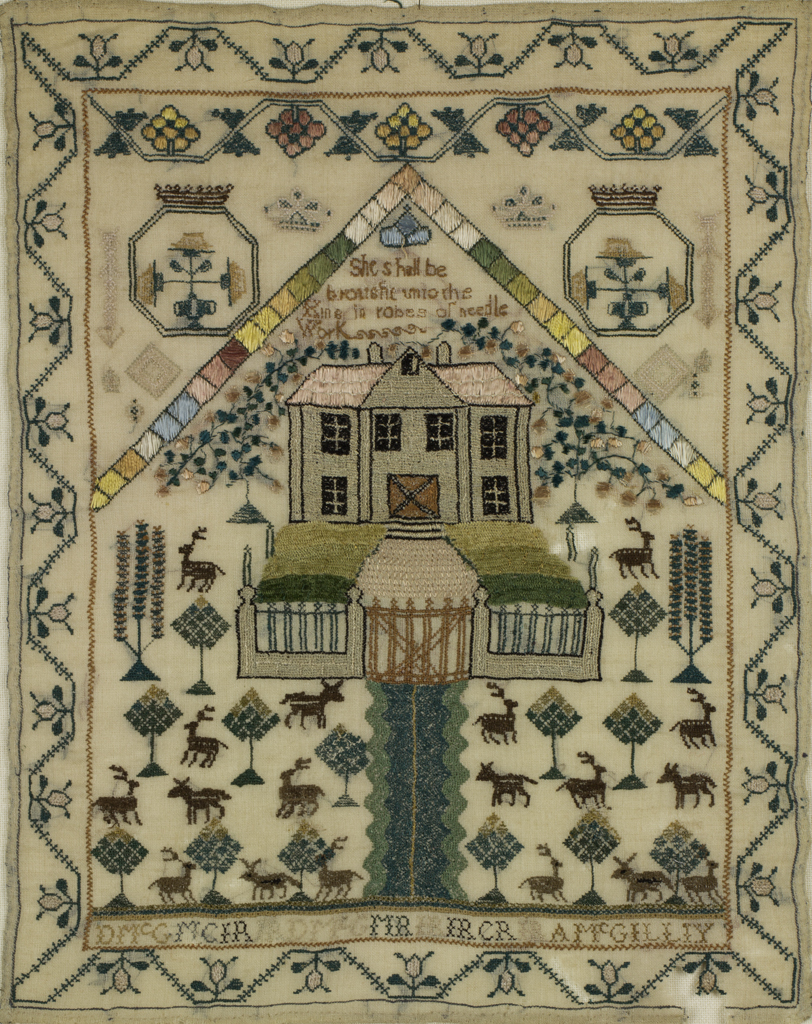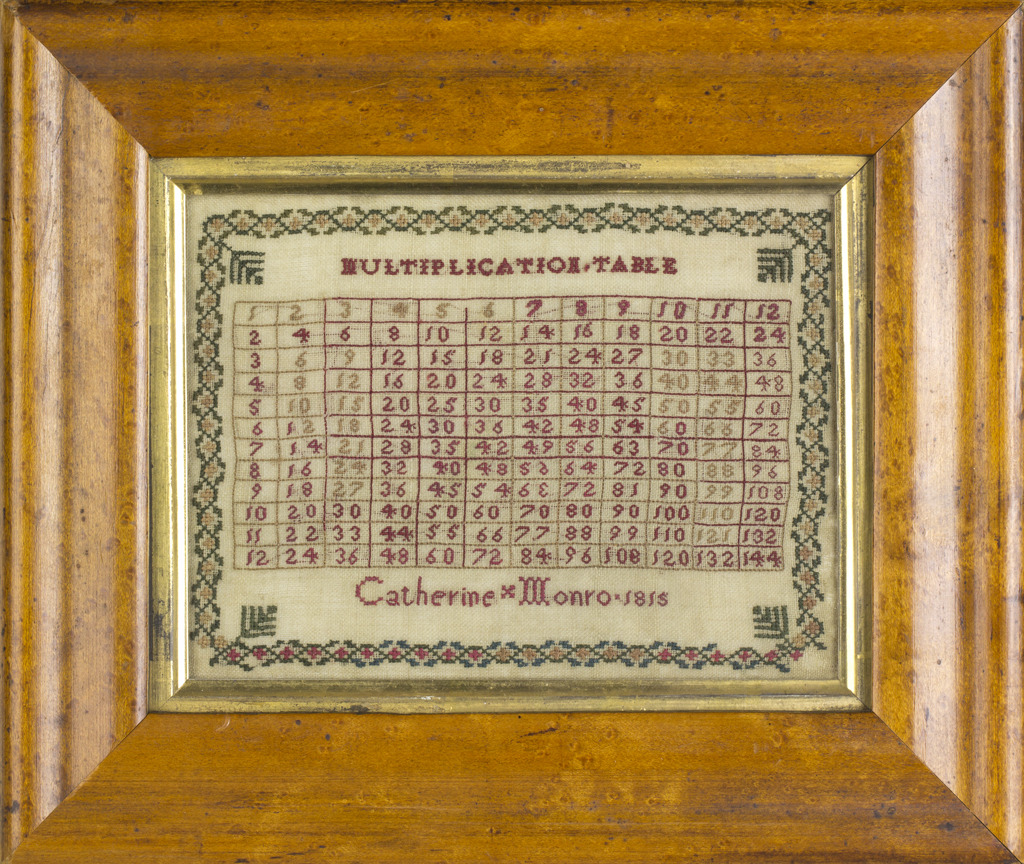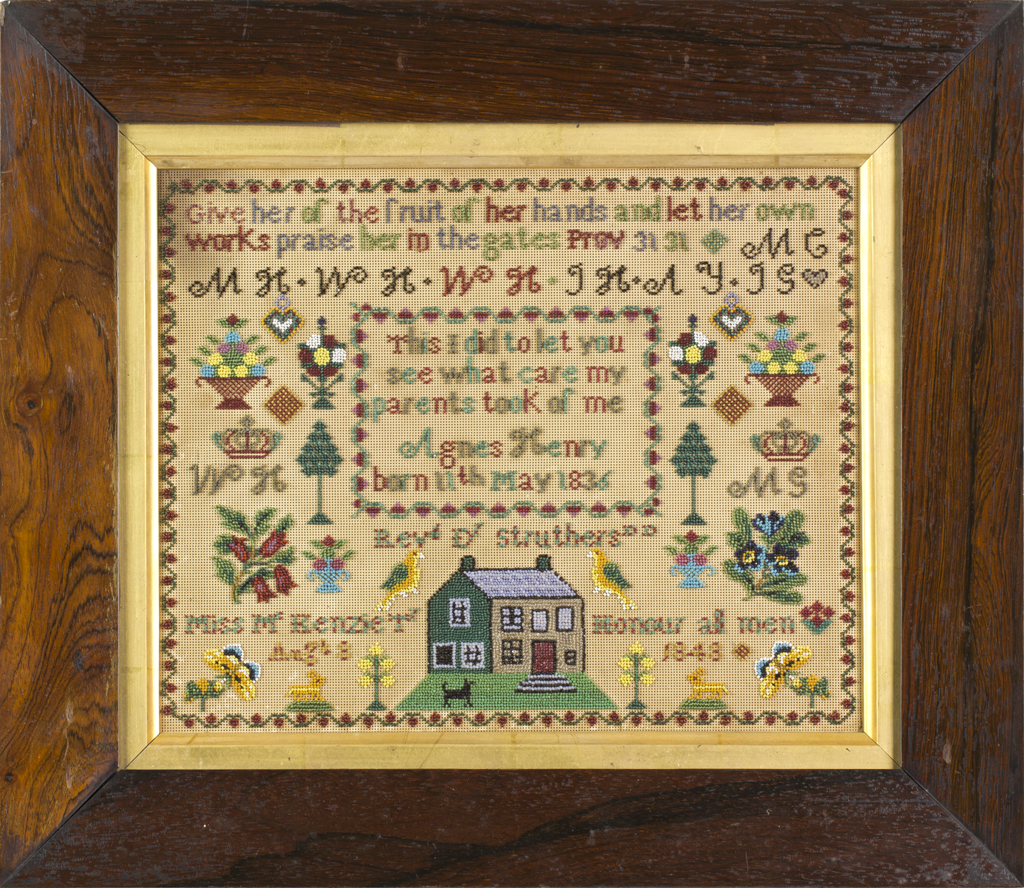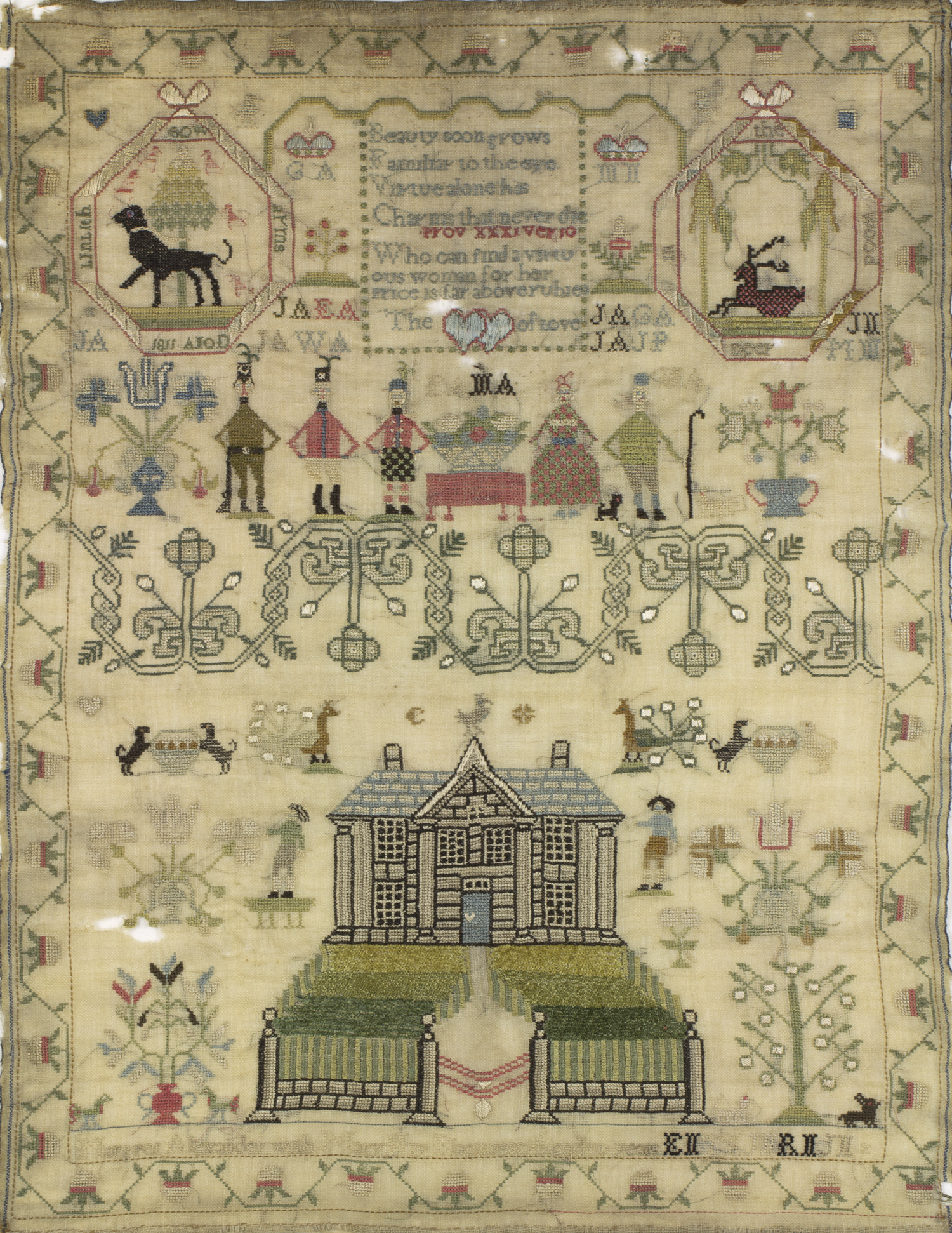Embroidered Stories: Scottish Samplers
26 Oct 2018 - 21 Apr 2019
Exhibition Gallery 2, Level 3
Free
#ScottishSamplers
Made by girls and occasionally boys, usually as part of their education, samplers are small pieces of needlework containing information about a person’s education, family, religion and interests. This collection of 70 samplers is a touching personal record of children’s lives, made by hand in their formative years and recording the things most dear to them.
Scottish samplers are unique in that they often include the initials of extended family members and details of the place where the person lived. This has allowed collector Leslie Durst to identify the makers through genealogical research, often revealing surprising personal histories.
Through the stories, they tell and the research behind them, this collection of samplers charts changes in morality, education and the industrialisation of Scottish society while also providing a fascinating insight into women’s history.
Generously on loan from the Leslie B. Durst Collection.
Header image: Margaret Alexander’s sampler, made during the Napoleonic Wars, includes portraits of three British army regiments. © Leslie B. Durst Collection
#ScottishSamplers
This exhibition revealed an insight into the lives of children in the 18th and 19th centuries through a unique collection of Scottish samplers on loan from American collector Leslie B. Durst.
Scottish samplers are unique in that they often include the initials of extended family members and details of the place where the person lived. This has allowed collector Leslie Durst to identify the makers through genealogical research, often revealing surprising personal histories.
Through the stories, they tell and the research behind them, this collection of samplers charts changes in morality, education and the industrialisation of Scottish society while also providing a fascinating insight into women’s history.
Visitor comments
Visitors are enthralled with Scottish Samplers. Find out what they’ve been saying here.
Very interesting to see the beautiful work and to learn something of the education and the stories of these young Scottish girls and women.
London, England
A superb collection, showing the skills of young girls in times past. It is interesting to think they were learning a varied curriculum via these activities.
Edinburgh, Scotland
An amazing collection. Interesting research and well worth a visit. How did they manage to do such detailed work in their lighting conditions?
Horncastle, England
An excellent way to identify how Scottish women could persist and be alive through hard times.
Argentina
The exhibition is amazing! So well done - not only is the work spectacular, the stories give me a sense of who the girls were. Beautiful. Thank you.
Vancouver, Canada
This exhibition blew me away - to think that these beautiful pieces of work have survived all these years is incredible. As a needleworker myself, I am in awe of the amount of work in each piece. Absolutely stunning.
Londonderry, Northern Ireland
What a fantastic exhibition. The work has been preserved really, really well. It would be lovely to think our work will be exhibited in 200 years time!
Ballyclare, Northern Ireland
Wonderful celebration of often invisible young women of history. Concentrated education - why not just simply learn about geography and maths while you can sew too!?
Carlise, England
Surprised and pleased to see that so many motifs, patterns etc survive in modern kits and books of designs. I feel as though I'm carrying on a long tradition. Also pleased to see so many local surnames and places that I recognise.
Cupar, Scotland
There is level access to the Museum via the main doors to the Entrance Hall on Chambers Street and the Tower entrance at the corner of Chambers Street and George IV Bridge. Lifts are available to all floors and accessible toilets are available on most floors, as well as a Changing Places (U) toilet in the Entrance Hall on Level 0. Guide dogs, hearing dogs and other recognised assistance dogs are admitted. Click here to find more information.
Generously on loan from the Leslie B. Durst Collection.
Header image: Margaret Alexander’s sampler, made during the Napoleonic Wars, includes portraits of three British army regiments. © Leslie B. Durst Collection.

